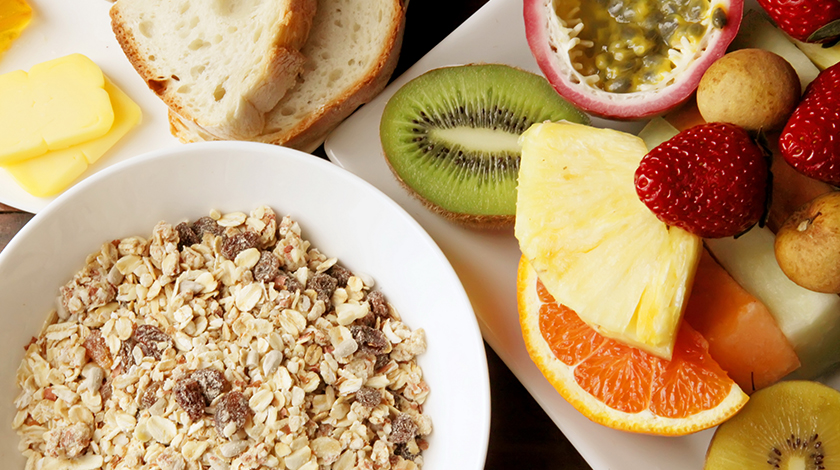Menopause is characterized by a fall in a woman’s level of female hormones such as estrogen and progesterone in middle age.1 A menopausal woman stops having her period, but other unpleasant symptoms such as hot flushes, night sweating and vaginal dryness can also occur.2 Fortunately, the better you understand the symptoms of menopause and their causes, the better you can cope.
Top tips
1. Eating well

Certain women experience increased risk of heart disease, osteoporosis and stroke during and after menopause.2,3 A nutritious and balanced diet is therefore even more important during this time. Aim for a fiber-rich diet that’s low in saturated fat, and make sure you’re getting enough vitamin D, protein and at least 700 mg calcium per day to combat osteoporosis.4 Try mixing your salads with flax seeds, chia seeds or edamame, which are rich in all of the above except vitamin D — you can always get it from the sun!
2. Staying cool

Hot flushes can cause embarrassment and discomfort and, if experienced at night, interfere with sleep patterns by causing night sweats. To manage the effects of hot flushes — particularly in the summer — wear light, breathable fabrics such as cotton or linen. At night, keep a flask of cold water next to the bed, so you can cool down easily if you need to.
3. Exercise more

Changes in hormone levels may leave you feeling more stressed and irritable than usual. Exercise releases endorphins, which are feel-good hormones that contribute to feelings of relaxation and joy. Exercise can also help reduce your risk of heart disease, improve bone health5 and even regulate your body temperature to minimize hot flushes.1
Sources
- The Menopause. Women’s Health Concern. Visited 19 May 2014.
- Menopause. NHS Clinical Knowledge Summary. Visited 19 May 2014.
- Women and Heart Disease. British Heart Foundation. Visited 19 May 2014.
- Calcium. Food Standards Agency. Visited 19 May 2014.
- Healthy Bones. National Osteoporosis Society. Visited 19 May 2014.

